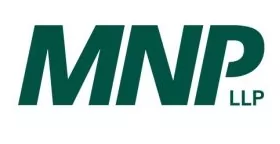Running a successful and profitable agri-food business in today's increasingly complex and integrated marketplace is a huge challenge. The events and trends of the last several months may be indicative of what the food industry can expect in the near future — and food manufacturers should take a step back to see if they are positioned to succeed. Consider: oil prices fell by over 50 per cent between June 2014 and January 2015; negotiations concluded on the Canadian-European free trade agreement; the industry continues to consolidate — Sobeys and Loblaws purchased Safeway and Shoppers Drug Mart respectively; labour shortages are becoming more pronounced with the recent changes to the temporary foreign worker program; ongoing changes to food safety and labeling regulations; and the fluctuating Canadian dollar — just to name a few.
Making proactive, informed decisions is critical to staying competitive and avoiding setbacks. Short-term tactics are often mistaken for strategy. The former is typically reactionary and treats symptoms while the latter diagnoses situations and results in pre-emptive solutions to potential longer-term problems.
Designed to help you strategically assess your company's strengths and weaknesses by identifying issues affecting measurable performance indicators, business diagnostics can systematically help you decide which changes you need to make and when.
The Process
Using business diagnostics, you can identify the root cause of inefficiencies and determine what projects have the highest potential for significant return, which allows you to develop a priority sequence. The typical business diagnostic begins with a detailed look at your company's profile, processes and markets. A customized project plan is then developed to guide you through the remainder of the process.
Once you understand what the potential concerns are in each of these areas and what's causing them, you can begin to identify solutions. Business diagnostics also allow you to determine the probability of success of each solution. Armed with this valuable information you can weigh the costs and benefits of a solution against the current financial status of your business and how that course of action will fit into an overall strategy geared for success.
Responsive Diagnostics
Responsive diagnostics focus on what is important to your company during its particular stage of development.
Start Ups: Start off on the right foot
- Develop a business plan
- Determine financing needs and opportunities
- Implement business processes
Growth Enterprises: Ensuring growth is strategic
- Structure cash flow
- Increase capacity
- Create an organizational structure
- Adjust processes
- Manage information technology
Mature businesses: Why has growth slowed down?
- SWOT analysis
- Explore R&D opportunities
- Develop growth strategies
- Research potential markets
Challenged Businesses:
Businesses with outdated product lines experiencing declining sales need to diagnose their issues quickly in order to:
- Improve operational efficiency
- Analyze market and product opportunities
- Attract and retain employees
- Structure cash flow
- Manage new technology
Consider how your company has performed during the last five years. If you had dedicated resources to business diagnostics five years ago, are there any mistakes you might have avoided and perhaps added more to your bottom line? Maybe it's time for an objective health examination and a professional second opinion.
The content of this article is intended to provide a general guide to the subject matter. Specialist advice should be sought about your specific circumstances.

